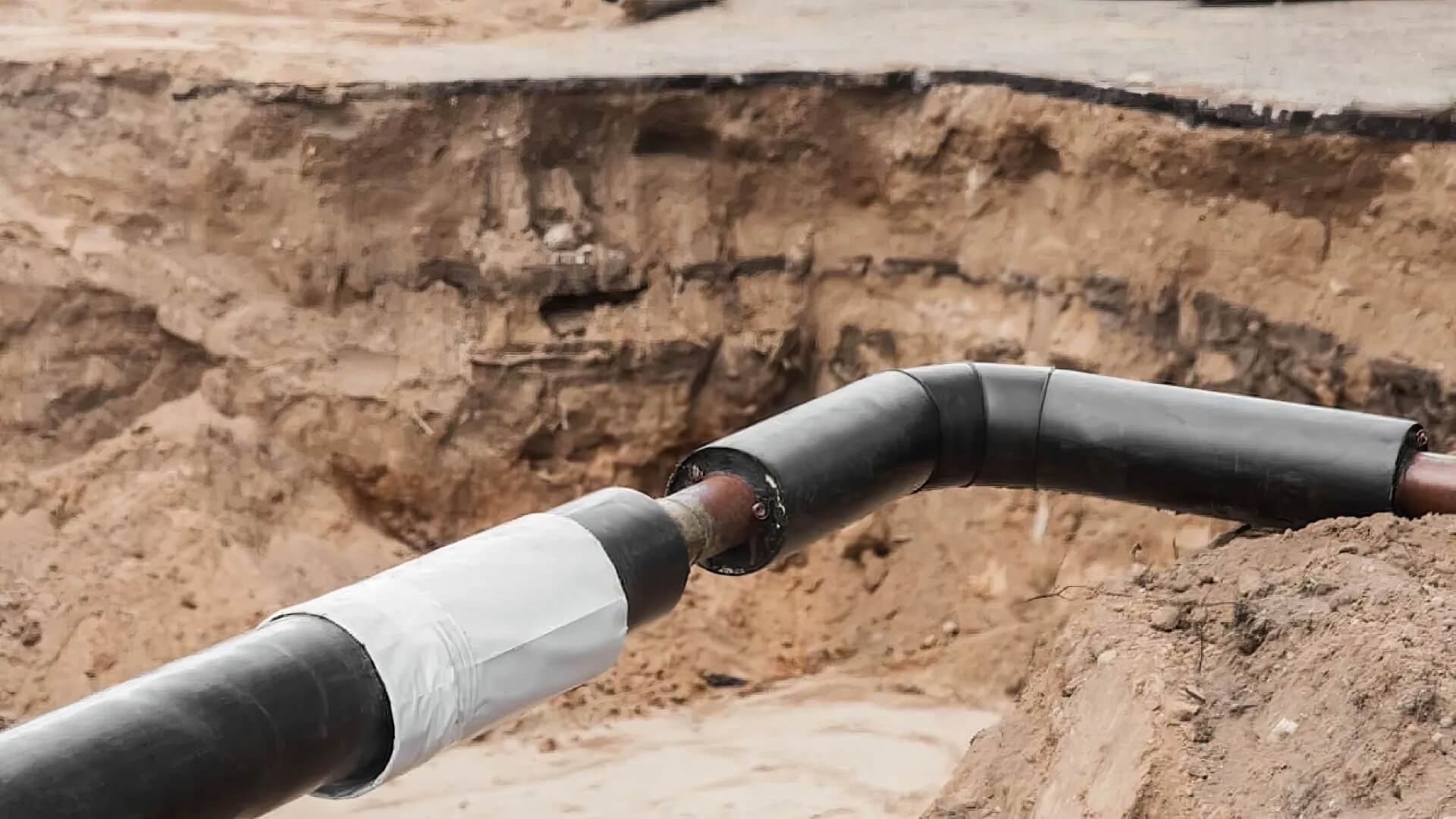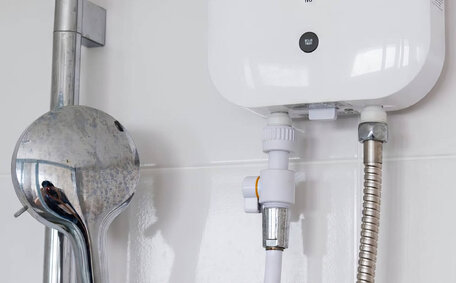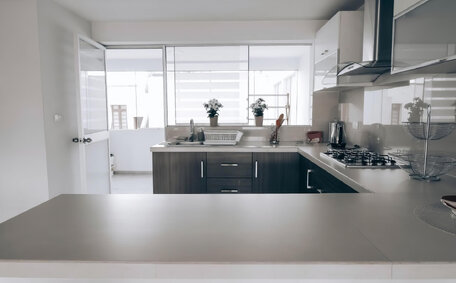Understanding Your Gas Water Heater’s Pilot Light
A pilot light is an integral part of your gas water heater, igniting the burner for immediate hot water. It remains lit consistently, eliminating the need for an alternative ignition method.
When lit correctly, the pilot light flame burns steadily with a hint of blue at the base. It’s important to familiarise yourself with the appearance of a properly working pilot so you can readily identify any issues.
Understanding what your pilot light does and how it should look gives you the foundational knowledge for troubleshooting and relighting it safely when needed.
The Role and Function of the Pilot Light
The primary role of the pilot light is to provide a small, constant flame that will ignite the main burner when hot water is required. This allows for immediate water heating without the delay of lighting the main burner each time.
The pilot light flame heats a thermocouple or thermopile which sends a signal to the gas control valve to open and allow gas flow to the main burner. Once lit, the main burner uses the pilot light to sustain the flame and heat the water in the tank.
Keeping the tiny pilot flame alight at all times enables instant hot water by removing the ignition step. It also provides easier relighting than having to restart from scratch if the main burner was to extinguish.
Identifying the Pilot Light on Your Water Heater
Locating the pilot light is the first step in relighting it. Many water heaters have a small viewing window that allows you to visually inspect the pilot light. If not, look for a tiny flame behind a removable access panel on the front or side.
Refer to your user manual to identify exactly where the pilot light is positioned within your particular unit. There may also be an indicator light - a small beacon that glows when the pilot is active.
Familiarising yourself with your water heater’s pilot light location through the manual prepares you for effective monitoring and relighting.
Safety Precautions Before Relighting the Pilot Light
When relighting your gas water heater’s pilot, safety should be the number one priority. Before getting started, ensure there are no ignition sources or open flames nearby that could spark a fire. Double check that you cannot detect the odour of any gas leaks in the area.
Ensure good ventilation by opening windows or doors before relighting your pilot light, enhancing safety throughout the process.
Verify the main gas supply valve is turned fully off and wait 5-10 minutes for any residual gas to dissipate. Review your water heater’s manual for unit-specific steps. Equip yourself with the necessary lighting tool, usually an extended lighter or long matchstick.
Taking prudent precautions allows you to approach the relighting process cautiously. Rushing in without due safety measures risks dangerous consequences.
Checking for Gas Leaks
Conduct a thorough check for gas leaks before you proceed with relighting the pilot.
Call our team at Erskine Park Plumbing on 1300 349 338 immediately. We are fully equipped to locate and repair leaks safely.
Carefully inspect the gas lines and their connections, paying special attention to lower areas where gas may accumulate. If the scent grows stronger, evacuate everyone from the area straight away and contact emergency services followed by our professionals.
Address suspected gas leaks immediately to prevent dangerous gas build-ups and potential ignition. As your local experts, your safety is our top concern so call us any time you need leak detection or repairs.
Allowing Gas to Dissipate
After turning the gas control knob to the 'off’ position, it is crucial to wait a full 5-10 minutes before attempting to relight the pilot. This allows any residual gas fumes to dissipate from the water heater and surrounding area.
Any leaked gas can pose a risk of explosion or flare-up, so it’s critical to allow sufficient time for the gas to clear before relighting the pilot.
Never rush or skip this venting period. Reliably wait the indicated duration with strong ventilation to purge unburnt gas. This vital step safeguards against hazardous ignition and promotes safe relighting.
Step-by-Step Guide to Relighting the Pilot Light
- Ensure all gas supply valves are turned fully off and wait 5-10 minutes for any residual gas to dissipate.
- Remove the access panel to expose the pilot light assembly.
- Repeatedly confirm the absence of gas odours before continuing with the relighting procedure.
- Hold an extended lighter or long match near the pilot assembly while turning the gas control knob to the 'pilot’ position.
- Once lit, keep the flame on the pilot for 30-60 seconds to ensure the thermocouple heats up sufficiently.
- If the pilot remains lit, turn the control knob to the 'on’ setting then replace the access panel.
- If the pilot extinguishes when released, repeat steps 3-5 ensuring to hold the flame steady for longer.
- For electronic systems, repeatedly press the igniter button while adjusting the gas control valve.
Turning Off the Gas and Accessing the Pilot
Before attempting to relight the pilot light, you must first shut off the gas supply properly. Locate the gas control valve on your water heater and turn the knob clockwise to the 'off’ position. Verify the knob is set fully off.
Consult your water heater’s manual to locate the access panel or viewing window to reach the pilot light assembly. Carefully detach the panel, handling components gently.
With the gas turned off and access gained, you can now proceed to safely light your pilot following the outlined steps. After relighting, replace any panels you removed to protect the pilot light from dust or debris.
Setting the Gas Control Valve to Pilot
After allowing adequate time for any residual gas to dissipate, you can set the gas control valve to the 'pilot’ position, enabling gas flow to the pilot light assembly. Grip the valve knob firmly and turn it counterclockwise until aligned with the pilot marking.
On some models, you may need to press down on the knob as you rotate to depress an internal button that releases gas flow. Refer to your manual as valve designs can vary between units, showing you exactly how to relight pilot mechanisms correctly. Hold the knob depressed for 30-60 seconds during ignition to allow gas saturation.
After setting the valve to 'pilot’ and pressing if necessary, ignite the pilot with a steady ignition source, maintaining gas flow until the flame stabilises.
Manual vs Electronic Ignition
There are two main types of pilot light ignition systems in gas water heaters - manual and electronic.
For manual ignition models, hold an external flame, such as a long match or lighter, to the assembly after setting the control valve to 'pilot’. Ensure a stable flame and press down on the valve if required, releasing only once the pilot burns steadily.
Electronic ignition uses an igniter button instead to create a spark for lighting. Turn the gas to pilot, then push the igniter repeatedly while holding it near the pilot light. Activate the igniter button to produce a spark that ignites the pilot light.
Both methods result in a lit pilot but vary in their source for the initial flame. Refer to the water heater’s branding or manual to confirm which system is utilised. Then follow the above instructions per the relevant method.
Confirming the Pilot Light Has Lit
After igniting the pilot light, it is essential to confirm it is properly lit before leaving. After igniting the pilot light, it is essential to confirm it is properly lit before leaving.
A correctly lit pilot will have a persistent, steady blue flame indicating proper ignition.
The flame may envelope the thermocouple or flicker slightly at first before stabilising. Watch for a full minute to guarantee consistent burning rather than short bursts of flame or sparks.
Listen for the distinct sound of the lit pilot. You should hear a slight hissing noise. If any doubt remains about the pilot status, repeat the lighting process to ensure a fully established flame.
Troubleshooting Common Relighting Issues
You may encounter some common challenges when attempting to relight your gas water heater’s pilot light. Confirm there is adequate gas pressure. Allow additional time for any residual gas to dissipate before retrying the lighting process.
Should the pilot fail to ignite, check the gas control valve is on 'pilot’ and hold the ignition source steady for 60 seconds.
If the pilot lights but does not stay lit after its ignition source is released, consult your manual for instructions on how to relight the pilot light safely. Try relighting the pilot, holding the ignition source longer to enable the unit to heat adequately. If issues persist, call a professional for assistance.
For electronic igniters, check the batteries in case of ignition failure and consult the manual for relighting instructions. Try new batteries before assuming unit failure. As a safety precaution, always wait 10 minutes between relight attempts to prevent gas build up.
Pilot Light Doesn’t Stay Lit
There are a few common reasons why your gas water heater’s pilot light may initially ignite but then not stay lit after releasing the ignition source:
- Faulty thermocouple - This component senses the pilot flame and signals the gas control valve to remain open. If it malfunctions, the pilot will shut off.
- Weak pilot flame - A small, weak flame may fail to properly heat the thermocouple to keep the gas flowing.
- Drafts or ventilation issues - Strong air currents or poor ventilation can blow out the pilot flame.
- Old thermocouple - Over time, thermocouples accumulate mineral deposits and degrade, preventing them from detecting the pilot flame.
First, check for any external factors like fans, open windows or forced-air vents that could be interfering with the pilot. Relight the pilot and hold the ignition source flame steadily in place for 90 seconds before releasing. This allows extra time for the unit to heat up.
If the pilot still doesn’t remain lit, the thermocouple likely needs replacement. Shut off the gas supply and call a professional for assistance to avoid any risks. Our team at Erkine Park Plumbing are fully qualified to inspect the pilot assembly and thermocouple and restore proper operation.
Pilot Light Won’t Ignite
If the pilot light fails to ignite after several relight attempts, there are a few common issues to check:
- Inadequate gas flow - Verify the gas control valve is fully set to pilot and check your main gas line shutoff valve is turned on.
- Old or faulty igniter - For electronic ignition systems, the igniter may need replacement if unable to produce a spark.
- Gas leak - If any smell of gas is detected, immediately stop troubleshooting and call our professionals.
- Thermocouple problems - Issues with the pilot thermocouple not heating sufficiently can prevent ignition.
Carefully work through these possible causes but exercise caution. Any signs of gas leaks warrant stopping and calling our team at Erskine Park Plumbing on 1300 349 338. We have extensive experience servicing pilot light assemblies to safely restore ignition.
When to Call a Professional
Although relighting your gas water heater’s pilot light is often a straightforward DIY task, certain situations warrant leaving it to the professionals:
- You smell gas anywhere along the gas lines
- The pilot will not stay lit after repeated attempts
- Issues reoccur soon after relighting the pilot
- The electronic igniter fails to produce a spark
- You lack the proper equipment or comfort level to relight safely
Our licenced plumbers at Erskine Park Plumbing have extensive training and experience servicing all types of water heaters. If in doubt - give us a call at 1300 349 338 or email jobs@erskineparkplumbingservices.com.au. We’re always happy to provide advice or come out to get your hot water running again.
Signs You Need Professional Assistance
Several clear signs indicate it’s wise to call in a professional plumber rather than attempting to relight the pilot yourself:
- You detect any scent of gas near the water heater or supply lines
- The pilot flame ignites but will not remain lit after multiple relight attempts
- Issues arise again soon after you successfully relit the pilot
- The pilot shows signs of damage or abnormal function
- Problems exist elsewhere in the system like the gas line or thermocouple
- You don’t have the proper tools or expertise to address the specific problem
Our licenced technicians at Erskine Park Plumbing are fully equipped to safely inspect your entire system and get your pilot light working reliably. Reach us anytime at 1300 349 338 for assistance.
What a Professional Can Do
Enlisting a professional plumber for pilot light issues comes with considerable benefits.
As licenced technicians, we at Erskine Park Plumbing can accurately diagnose problems through expert inspection and testing. We have the skills to repair thermocouples, igniters, gas valves, leaks, ventilation issues, and more.
By engaging our service, you gain the assurance that your system functionality and safety are restored by qualified tradespeople. With extensive experience on all water heater brands, we can troubleshoot effectively where DIY efforts may fall short.
We take accountability for quality through service warranties. Allow our specialists to handle the intricacies - we relight pilot lights daily.






